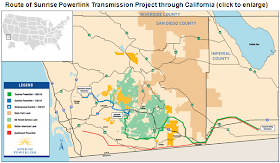National Parks: In 1872, President Ulysses S. Grant signed the Act that established
 |
| Great Basin National Park |
Yellowstone as the nation’s first national park. Sequoia and Yosemite followed, both designated as national parks in the year 1890. In 1916, the Organic Act led to the creation of the National Park Service, a bureau of the Department of the Interior, to protect all designated national park land. The fundamental purpose of National Park Service is “to conserve the scenery and the natural and historic objects and the wild life therein and to provide for the enjoyment of the same in such manner and by such means as will leave them unimpaired for the enjoyment of future generations.” Hunting, commercial fishing, livestock grazing, mining and logging are all strictly prohibited on national park land. Today, a total of 84.9 million acres has been designated national park land, approximately 3.6% of all land in the United States. Of the 84.9 million acres in the National Park Service, 55 million acres are located in Alaska.
A few of the 58 National Parks in the United States: Arcadia, Badlands, Big Bend, Carlsbad Caverns, Crater Lake,
Death Valley, Denali, Everglades, Glacier, Grand Canyon, Grand Teton, Great Basin, Hot Springs, Joshua Tree, Katmai, Mammoth Cave, Mesa Verde, Mount Rainier, Olympic, Petrified Forest, Redwood, Sequoia, Shenandoah,
Yellowstone, Yosemite, Zion
National Forests: In 1891, the Forest Reserve Act allowed the president to designate
 |
| Angelina National Forest |
public land reserves. Fourteen years later, the Transfer Act placed these reserves, which were renamed national forests, under the auspices of the Department of Agriculture. The U.S. Forest Service was created within the department specifically to regulate and manage these lands. Similar to national parks, land preservation is one of the primary functions of national forests. However, unlike national parks, these forests and grasslands are open to commercial activities like logging, livestock, as well as recreational activities like camping, hunting, and fishing. Currently, 193 million acres of land is designated national forests, located in 42 states. The first Chief of the Forest Service, Gifford Pinchot, once stated that National Forest land is managed “to provide the greatest amount of good for the greatest amount of people in the long run.”
U.S. Wildernesses: Wilderness areas were established in response to heightened concern about pollution in the 1950s and 1960s. The Wilderness Act was signed into law by President Lyndon B. Johnson in 1964. The Act gave a legal definition of the term wilderness:
“A wilderness, in contrast with those areas where man and his own works dominate the landscape, is hereby recognized as an area where the earth and community of life are untrammeled by man, where man himself is a visitor who does not remain.”
The passage of the Act established the National Wilderness Preservation System (NWPS) to protect the then 9 million acres of federal land officially recognized as U.S. wilderness. Wilderness areas are parts of national parks, wildlife refuges, national forests, and the public domain. Today, there are 107.5 million acres of wilderness spanning 44 states and Puerto Rico, accounting for 4.82% of the United States. About half of that total is in the state of Alaska. The largest contiguous U.S. wilderness area is the Noatak and Gates of the Arctic Wilderness in Alaska at close to 13 million acres. Broken up by a series of roads into 35 small wilderness areas, Death Valley Wilderness is technically the largest wilderness area outside Alaska. However, at close to 2.4 million acres, Idaho’s
Frank Church-River of No Return Wilderness is the largest,
roadless protected wilderness area in the lower 48.
Wilderness areas are managed by four federal land management agencies: the National Park Service, the U.S. Forest Service, the U.S. Fish and Wildlife Service, and the Bureau of Land Management. Unlike national parks, wilderness areas allow regulated hunting. And although wilderness areas prohibit logging, mining, and motorized vehicles, some resource extraction and livestock grazing persists in areas where those activities occurred prior to its wilderness status.
To be eligible for wilderness designation, an area must be at least 5,000 acres large or a roadless island; appear natural with unnoticeable human presence; provide space for recreational activities and solitude; and contain features that are deemed ecologically, scientifically, or historically significant.
National Wildlife Refuges: is a designation for certain
protected areas of the United States

managed by the U.S. Fish and Wildlife Service. The National Wildlife Refuge System is the system of public lands and waters set aside to conserve America's fish, wildlife and plants. Since President Theodore Roosevelt designated Florida's Pelican Island National Wildlife Refuge as the first wildlife refuge in 1903, the System has grown to over 560 national wildlife refuges and other units of the Refuge System, plus 38 wetland management districts encompassing more than 150,000,000 acres
The National Wildlife Refuge System welcomes more than 45 million visitors each year, generating over $1.7 and creating approximately 27,000 jobs for local economies. The Refuge System manages six wildlife-dependent recreational uses in accordance with the National Wildlife Refuge System Improvement Act of 1997, including hunting, fishing, birding, photography, environmental education, and interpretation. (
PBS,
Wikipedia)
 The U.S. Environmental Protection Agency (EPA) has proposed a rule that would modernize Clean Water Act (CWA) reporting processes for hundreds of thousands of municipalities, industries, and other facilities by converting to an electronic data reporting system. The proposed e-reporting rule would make facility-specific information, such as inspection and enforcement history, pollutant monitoring results, and other data required by permits accessible to the public through EPA’s website.
The U.S. Environmental Protection Agency (EPA) has proposed a rule that would modernize Clean Water Act (CWA) reporting processes for hundreds of thousands of municipalities, industries, and other facilities by converting to an electronic data reporting system. The proposed e-reporting rule would make facility-specific information, such as inspection and enforcement history, pollutant monitoring results, and other data required by permits accessible to the public through EPA’s website.


























